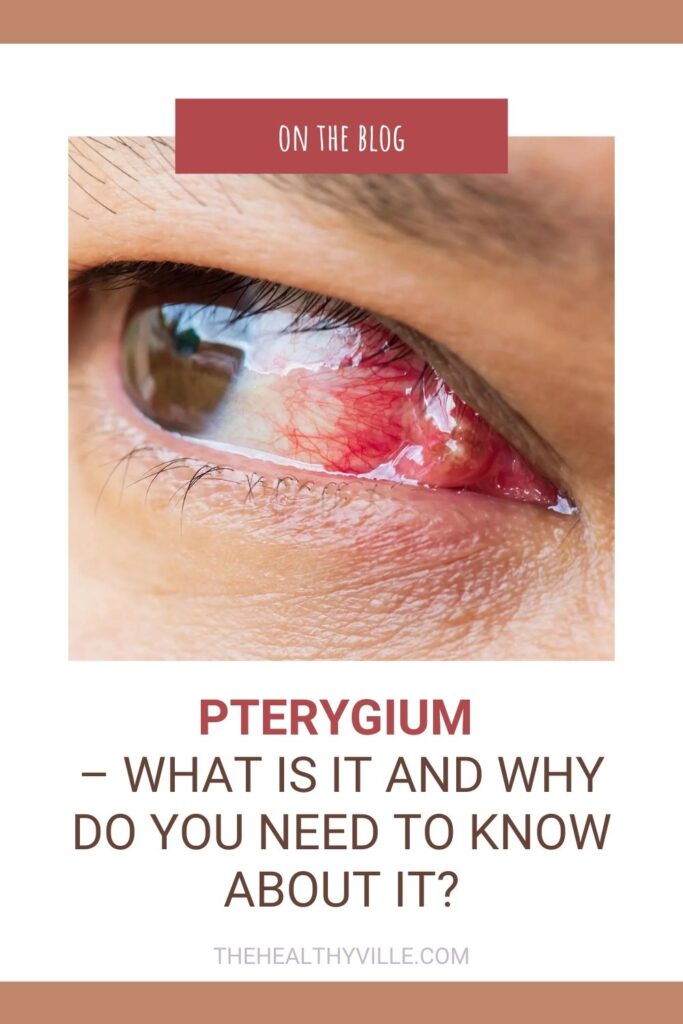Pterygium in the eyes is a health problem that is caused mainly by the impact of the sun and the environment. Find out all about it!
The pterygium in the eyes is also called pinguecula or pterygium. This is a protuberance of tissue that appears in the conjunctiva and that can put eye health at risk, although in principle it is not a serious condition. The best way to prevent this condition is by protecting your eyes from the sun’s ultraviolet rays, with good glasses.
Since the surface of the eye is directly exposed to the environment, it receives the impact of the sun’s rays and atmospheric pollution. These are decisive factors for the appearance of fleshiness in the eyes.
Precisely because of the above, fleshiness in the eyes is a problem that appears more frequently in tropical areas. The strong radiation in these regions puts anyone at higher risk of developing one of these conditions.
What is pterygium?
Pterygium in the eyes can be defined as an abnormal growth of tissue in the ocular conjunctiva. This is a thin, transparent membrane that covers the sclera, that is, the white part of the eye, and also the inner area of the eyelid.
This growth looks like a lump with a triangular or circular shape and of variable size. It extends from the conjunctiva to the cornea. Sometimes it appears as a kind of whitish cloth on the inner or outer edge of the cornea.
When the flesh in the eyes takes the form of a small white ball, full of fat, it is called a pinguecula. If it begins to grow and reaches the pupil, even reaching the cornea, it is called a pterygium. These are both benign tumors that, however, can disfigure the eye.
Characteristics
The pterygium in the eyes is classified, in principle, according to its size:
- It can be small, in which case it does not cause major inconvenience.
- It is also possible that it is medium and in that case, it usually causes some discomfort.
- The most likely case is that it will affect vision if it is large.
On the other hand, this type of condition is also classified according to the degree of inflammation it presents. From this point of view we find two types:
- The atrophic, where the bump is thin and without symptoms.
- The fleshy or inflamed one, which is red in color, is thick and causes various symptoms.
- The usual symptoms of pterygium in the eyes are:
- Redness in the eyes.
- Frequent itching or burning.
- Pain that is experienced as stabbing.
- Blurred vision to a greater or lesser extent.
- A feeling of having a foreign object in the eye.
Origin
As in other cases, science does not know precisely why a pterygium appears in the eyes. Factors that facilitate its appearance are:
- Exposure to ultraviolet rays: continuous exposure to the sun, without eye protection, facilitates the appearance of this type of bumps.
- Exposure to environmental elements: wind, heat, dust, dryness and smoke also contribute to the formation of these pimples.
- Dry eye disorder: those who suffer from it, more easily develop fleshiness in the eyes.
- Sleep interruption: when a person stops sleeping frequently and for long periods of time, they tend to generate this type of anomaly.
Everything indicates that the factors mentioned prevent adequate lubrication in the eyes. This, of course, causes dryness and then irritation. Right where the irritation takes place, a new tissue begins to grow, causing the flesh.
Don’t forget to SHARE everything you now know about pterygium with your friends and family on your social networks!

